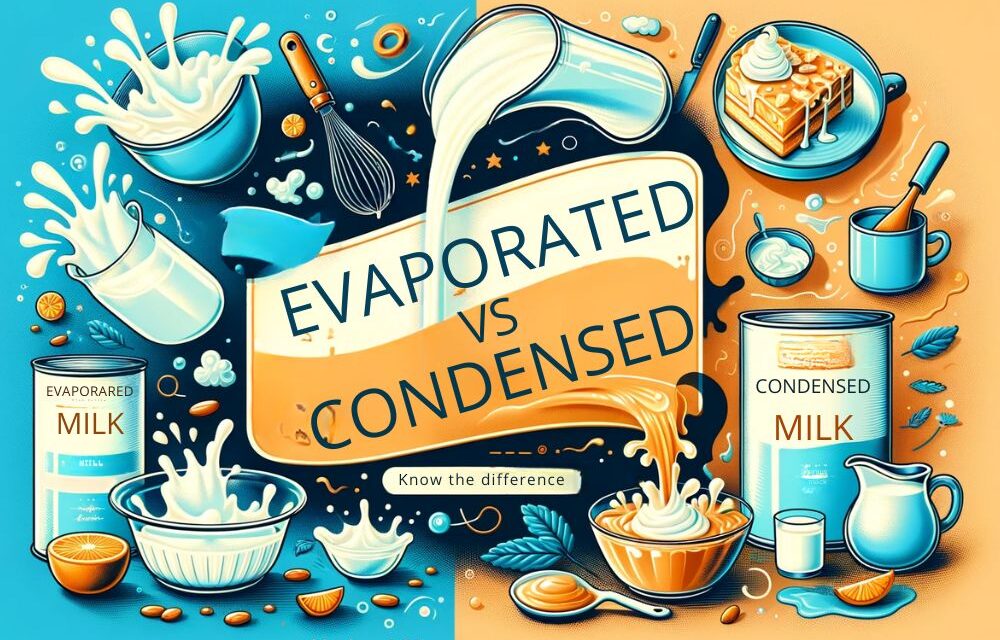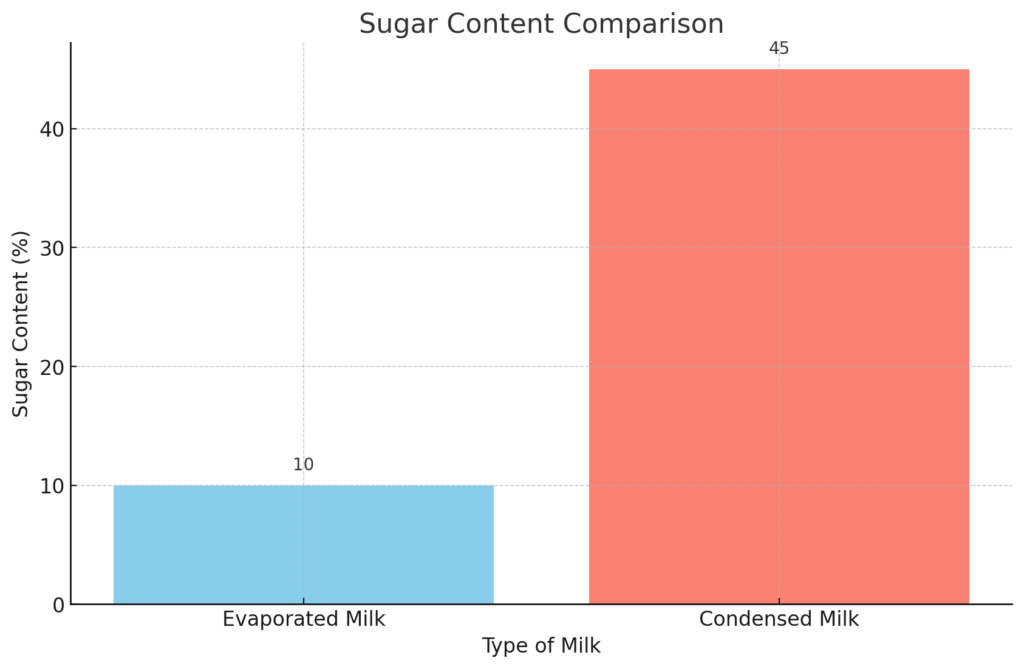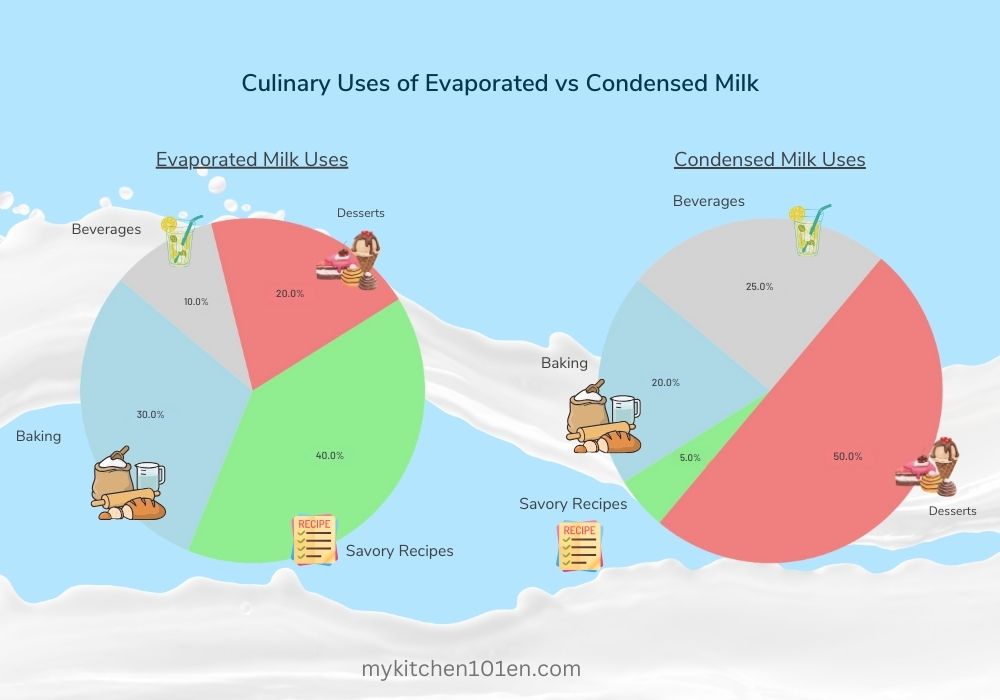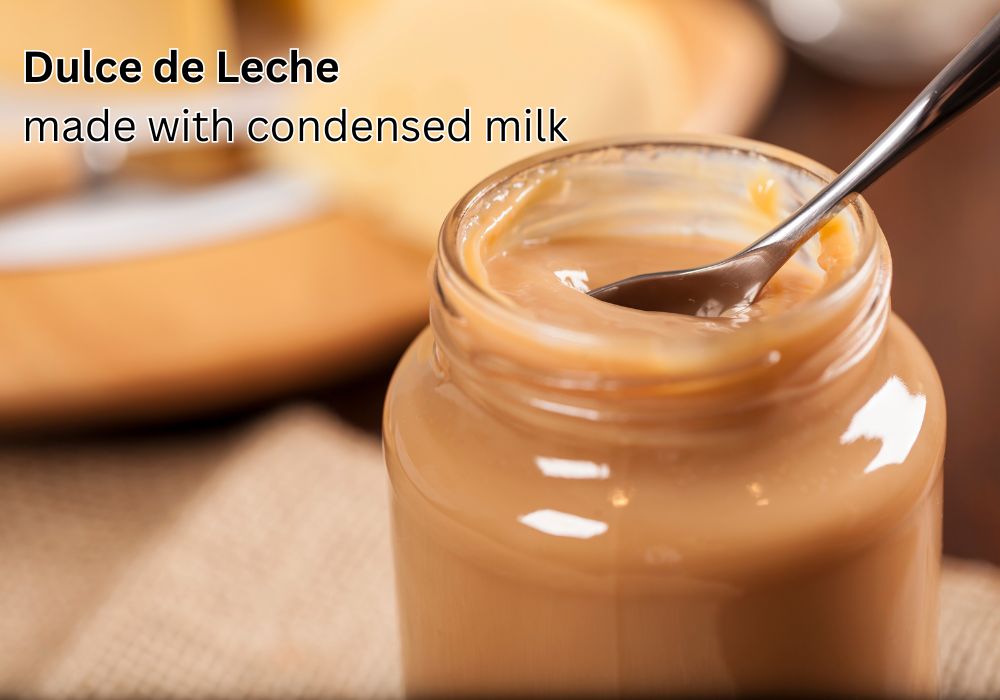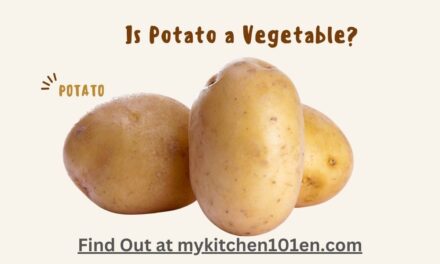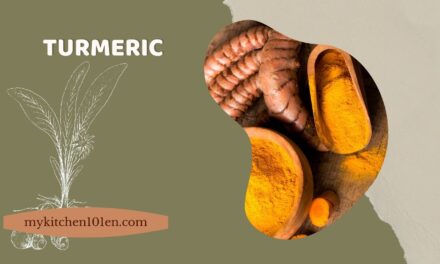Evaporated milk and condensed milk, often causing confusion at the grocery store due to their similar packaging and concentrated milk base, are distinct ingredients that can significantly impact the outcome of your culinary creations. Knowing the differences between these two can help you make informed choices in your cooking and baking endeavors.
Key Takeaways: Evaporated Milk vs. Condensed Milk
| Aspect | Evaporated Milk | Condensed Milk |
|---|---|---|
| Sweetness | Unsweetened | Sweetened (40-45% sugar content) |
| Consistency | Thin, easily pourable | Thick, gloppy |
| Types Available | Non-fat, low-fat, whole | Only one variety |
| Culinary Uses | Baking, savory recipes | Baked goods, desserts, beverages |
| Interchangeability | Not interchangeable with condensed milk | Not interchangeable with evaporated milk |
Evaporated milk was developed in the 19th century as a way to preserve milk. Before refrigeration was common, evaporated milk provided a way to store milk for longer periods without spoiling, making it an essential item for long sea voyages and in areas without access to fresh milk.
Evaporated Milk in Culinary
Evaporated milk, created by heating milk to evaporate about 60% of its water content, results in a dense, creamy, and ultra-concentrated form of milk. This process not only reduces the milk’s volume but also imparts a slightly caramelized flavor and darker color compared to regular milk. Evaporated milk, available in skim, low-fat, and whole milk varieties, is particularly sought after for its creamy texture without the added sweetness, making it a versatile ingredient in both sweet and savory recipes.
Culinary Applications of Evaporated Milk
Evaporated milk is a staple in various dishes, offering a creamy texture without overwhelming sweetness. It’s a common ingredient in savory recipes and in baked goods where richness is desired but without additional sugar.
Condensed milk gained popularity during the American Civil War. It was valued for its long shelf life and high calorie content, making it a practical ration for soldiers.
Condensed Milk in Cooking
Condensed milk, often referred to as sweetened condensed milk, undergoes a similar process of water content reduction. However, it has a significant amount of sugar added (about 40-45%), resulting in a rich, thick, and super-sweet product with a caramel color. This type of milk is widely used across the globe, finding its place in an array of desserts like pies, puddings, and ice creams, as well as a sweetener in beverages like coffee and tea.
Creative Uses of Condensed Milk
Condensed milk’s unique sweetness and texture make it an ideal ingredient for various desserts and sweet beverages. It’s a key component in many baked goods, providing a distinct sweetness and moisture.
Not Interchangeable: The Importance of Using the Right Milk
Despite their similarities, evaporated and condensed milk cannot be used interchangeably in recipes. Substituting one for the other can result in dishes that are either too bland or overly sweet. The concentrated sugar in condensed milk not only sweetens but also adds a caramelized flavor that is not replicated by simply adding sugar to evaporated milk.
- A link to a recipe for Homemade Full Cream Sweetened Condensed Milk demonstrates how condensed milk can be made at home and integrated into various desserts.
- The Lemon Sponge Cake with Cream Cheese Cream Topping recipe showcases the use of evaporated milk in baking, offering readers a practical application of the ingredient.
- A mention of Cream-Based Walnut Sweet Soup Dessert exemplifies the use of condensed milk in a unique and traditional dessert.
- Linking to Egg Tarts with Crispy Biscuit Crust and Honeydew Sago Dessert provides readers with additional recipes that creatively use these milk products.
Both evaporated and condensed milk have a long shelf life. They can be stored for months or even years, making them ideal for stocking up in pantries.
Baking and Cooking with Evaporated and Condensed Milk
Understanding the unique properties and applications of evaporated and condensed milk can greatly expand your culinary repertoire. Here are some tips and tricks to make the most out of these versatile ingredients:
Tips for Using Evaporated Milk
- Substitute for Cream: Evaporated milk can be a healthier alternative to cream in recipes, offering similar texture and richness with less fat.
- Customizable Flavor: Since it’s unsweetened, evaporated milk can be flavored as desired, making it perfect for both savory and sweet dishes.
- Evaporated milk can be used as a lower-fat alternative to cream in recipes, adding richness without the added fat content. It’s a versatile ingredient in soups, sauces, and baked goods.
Tips for Using Condensed Milk
- Homemade Sweet Treats: Condensed milk is a key ingredient in many homemade candies and sweets, thanks to its rich texture and sweetness.
- Dessert Toppings: It can be used as a decadent topping for desserts, adding a creamy, sweet layer to your favorite treats.
- When boiled in its sealed can, sweetened condensed milk transforms into dulce de leche, a caramel-like substance popular in many Latin American desserts.
You can easily substitute coconut milk with evaporated milk in savory dishes like curries, enhancing the flavor profile while maintaining a rich, creamy texture.
Recipes Ideas with Evaporated and Condensed Milk
Recipes with Evaporated Milk
- Savory Dishes: Evaporated milk can be a secret ingredient in creamy pasta sauces, soups, and casseroles, adding richness without extra sweetness.
- Coffee and Tea Enhancer: It serves as a great creamer for coffee and tea, providing a creamy texture without altering the beverage’s sweetness.
Unique Desserts Using Condensed Milk
- No-Bake Sweets: Condensed milk is perfect for no-bake desserts, lending its thick, sweet texture to treats like fudge and truffles.
- Flavor Infusions: Experiment with flavoring condensed milk with ingredients like coffee, chocolate, or fruit purees for unique dessert sauces.
Evaporated and Condensed Milk in World Cuisine
Both evaporated and condensed milk have a global culinary presence, each playing a unique role in various international cuisines.
- Evaporated Milk: In many Asian and Caribbean dishes, evaporated milk is used to add creaminess to beverages and savory dishes.
- Condensed Milk: Popular in Latin American desserts, condensed milk is a staple in sweets like flan and tres leches cake.
Conclusion
Evaporated milk, known for its rich and creamy consistency, is commonly used as a substitute for regular milk in recipes. It is often used in savory dishes like creamy soups and sauces, as well as in desserts like custards and ice creams. Due to its concentrated nature, evaporated milk adds a subtle sweetness and enhances the overall richness of a dish.
On the other hand, condensed milk is thick and sweet due to the addition of sugar during the production process. It is widely used in desserts around the world, such as traditional flans, fudge, and caramel-based treats. The sweetness of condensed milk makes it a popular choice for creating indulgent and decadent desserts.
In conclusion, both evaporated and condensed milk offer a world of possibilities in the kitchen. Understanding their unique properties and applications opens the door to a myriad of culinary creations. From enhancing your coffee to creating show-stopping desserts, these versatile ingredients are essential in any kitchen.

